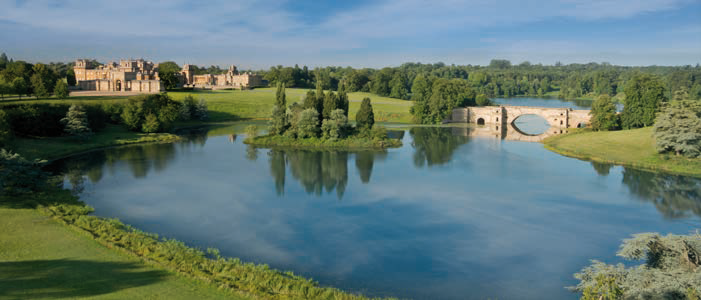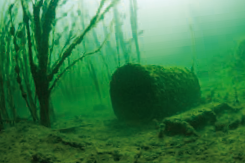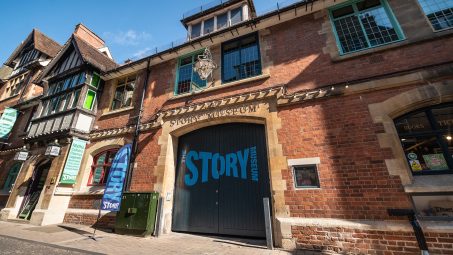
Blenheim Palace Lake Dredge
As many of you are aware we had planned to dredge the Queen Pool at Blenheim in 2020, however this was put on hold due to the pandemic. The time has allowed us to do work on the lake which now means we can dredge the lake as a wet dredge, rather than the previously […]
As many of you are aware we had planned to dredge the Queen Pool at Blenheim in 2020, however this was put on hold due to the pandemic. The time has allowed us to do work on the lake which now means we can dredge the lake as a wet dredge, rather than the previously planned dry dredge. We will keep you up to date on how its going, but here are the plans…
Why are we dredging?
An important part of the Blenheim Palace World Heritage Site – Queen Pool has an ecosystem rich in nitrogen and phosphates which is ideal for a healthy marine population. It also attracts overwintering wading birds which have given this area its status of Site of Significant Scientific Importance.
Unfortunately, the levels of silt threaten this delicately balanced ecosystem:
- Its current depth is around 30cm when, for optimum health, it should be around two metres.
- The dredge will remove around 300,000 cubic metres of silt, supporting the future wellbeing of the lake’s inhabitants by returning Queen Pool to that ideal two metre depth.
What is a dredge?
Dredging is the removal of silt from bodies of water. Silt is fine grains of rock, smaller than sand, that build up over time. This usually accumulates at a rate of around 1-2cm a year, but during severe storms deposits can reach up to 20cm.

Queen Pool has been dredged twice before, to our knowledge: partially in 1840 and then fully in 1895-96 when the 9th Duke of Marlborough received the dowry from his marriage to Consuelo Vanderbilt.
We are performing a wet dredge to remove the silt in Queen Pool. This means that there is no need to drain the lake or lower the water level any further, as is the case with a dry dredge.
How are we protecting the inhabitants during the dredge?
We have an area management plan to reduce the impact of the dredge on the lake’s residents.
The fish were moved from the Queen Pool to the Great Lake when the water level was lowered for the work on the bridge and cascades in October 2018.
We have been relocating water voles and safeguarding the area for all local wildlife from Autumn 2021. You may have seen our Remo-voles traps around the edges of Queen Pool.

What happens during the dredge?
We are now using a wet dredge technique for Queen Pool.
We will have three diggers set on a floating platform which will move slowly across the full surface of the lake, dredging over the course of about nine months. Along with the diggers are six hoppers which go backwards and forwards, bringing the silt from the platform to land.
This removed silt is then transferred to an agreed site of 100 acres of farmland where it will be spread evenly for drying. This land will then be returned to grassland.
We will have to close part of the route of Queen Pool, so there will be a period of time when the ‘loop’ around Queen Pool won’t be accessible.
We will put up maps showing different walking routes, we will also add interpretation boards and updating our website so everyone is aware of what will be happening as the Dredge takes place.
How long will it take?
Preparations for the dredge started in Autumn 2021. The dredge itself will begin in April 2022 and will take around nine months. We hope you agree that the disruption will really be worth it.
More in Attractions

The Story Museum: Bringing Stories to Life in Magical Ways
The Story Museum is no ordinary museum. Nestled in the heart of Oxford, this unique, immersive space is dedicated to celebrating the power of storytelling in all its forms. Whether through interactive exhibitions, live performances, or creative workshops, The Story Museum is on a mission to enrich lives—especially young lives—through the magic of stories.

HENLEY FESTIVAL 2024 UNVEILS PIONEERING VISUAL ARTS SHOWCASE
10 – 14 July 2024 | henley-festival.co.uk | #HenleyFestival | @henleyfestival
Henley Festival Presented by Westcoast – the UK’s only boutique black-tie festival – is delighted to reveal this year’s dazzling visual arts programme, featuring one of Britain’s best-selling figurative painters Mark Demsteader, the Doug Moran National Portrait Prize and Archibald People’s Choice Award-winning artist Esther Erlich, and sculptor Holly Bendall, who creates striking bronzes including a Greenpeace-supported permanent public installation that can be experienced in Porthleven.

Blenheim Palace announces annual Jousting Tournament dates
This spring, step back in time at Blenheim Palace as the UNESCO World Heritage Site transforms into an action-packed battlefield for its annual Jousting Tournament.
From this author

Experience ‘Life Below Stairs’ at Blenheim Palace: all-new visitor experience unveiled
From 29th March, step into history as Blenheim Palace unveils ‘Life Below Stairs’ – a groundbreaking new visitor experience that brings the hidden world of Victorian service to life like never before. The experience is set within some of the original working kitchens, open to visitors for the very first time.

Christmas and 2026 group bookings announced at Blenheim Palace with trade pricing...
Blenheim Palace is delighted to announce the highly-anticipated theme of Christmas at Blenheim for 2025 – Palace of Oz where groups can enjoy an enchanting festive experience with exclusive trade pricing.

Britain’s Greatest Palace like you’ve never seen it before: Blenheim Palace announces...
Blenheim Palace has announced a series of once-in-a-lifetime views and visitor experiences which will only be available for a limited time due to the launch of its most ambitious restoration project to date.


